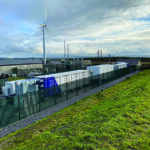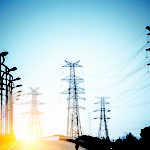The U.S. Department of Energy’s (DOE’s) National Renewable Energy Laboratory (NREL) is spearheading innovation in Energy Systems Integration (ESI) research. ESI is a comprehensive strategy that brings together many energy carriers, such as electricity, fuels, heating and cooling, and adds other infrastructures, such as water and transportation. This integration will bring about new, more sustainable solutions for energy generation, delivery, and use.
We are undergoing an unprecedented transformation of our nation’s energy system—changing the way we have been producing, delivering, and consuming energy over the past 100 years. This new energy era will include renewable sources such as wind, solar, and hydropower as well as nuclear energy and fossil energy such as oil, coal, and natural gas.
This energy supply is delivered through systems that occur at a variety of scales—from individual homes and businesses to energy systems that stretch across the continent. And, these systems are evolving to provide clean energy to consumers, using increasingly variable sources of electricity, to meet new variable consumer demands from smart appliances to electric and alternative fuel vehicles entering the market.
New Connections
Connections are also developing among the energy infrastructure and communications networks as well as other traditional infrastructures such as water and wastewater systems. As we see these connections evolve, it is causing us to rethink the traditional paradigms of energy system planning and operation with a strong focus on how we achieve the most efficient, flexible, and reliable energy system—one that enables planning and operations across interdependent domains (fuels, electricity, thermal, water, communications) to provide the required energy services to consumers at an affordable cost.
NREL is leading a worldwide conversation on how these connections will change the way we generate, deliver, and use energy. While we can’t anticipate the nearly infinite number of combinations of technologies, data, and devices that will interact in an integrated energy system, we do know that ESI is much broader than just building a smarter grid. By focusing on the optimization of our entire energy system, new research in ESI can increase efficiency, reliability, and performance while reducing cost and minimizing environmental impacts.
Looking ahead, we see ESI research examining the following interconnected and evolving elements of our energy system:
- A layer of physical energy devices that produce, consume, store, or transport energy, such as high-voltage wires, a wind turbine, or even a refrigerator motor or a dishwasher.
- An electromechanical-, electronic-, or software-based local controls layer necessary to allow these physical devices to respond to external signals in an optimized way.
- A communications layer, consisting of secure and private information and computation platforms necessary to support control applications at the system level.
- A layer of systems controls, ensuring the reliability of the physical devices interconnected to hosting infrastructures. This could include monitoring and energy network security assessment.
- A dynamic market layer, responsible for addressing economic, optimization, regulatory, financial, and policy aspects of the energy system and its environment.
New Tool in the Toolbox
To help NREL bring all of these elements together, the DOE has built the 182,500-square-foot Energy Systems Integration Facility (ESIF) on NREL’s campus in Golden, Colo. ESIF provides researchers with a unique set of resources and capabilities in one location, including megawatt-scale hardware testing; self-contained electrical, thermal, and fuel distribution busses; high -performance computing; and data analysis and visualization.
ESIF offers utility executives and other decision-makers a place to research new technologies in an environment that is friendly to exploration. ESIF will allow utility companies and investors to “touch the technology” and see it working in real time and on a large scale. Industry is eager for this experience; we have many partners already doing work at ESIF and many more have expressed interest.
Looking ahead, ESI is about tapping into the combined strength of these systems and squeezing more value out of every unit of energy we use while reducing costs and minimizing environmental impacts. The Energy Department has long-term energy goals of providing 80% of electricity with clean energy sources by 2035. A commitment to ESI can help us reach that goal. ■
— Dr. Bryan Hannegan is associate laboratory director for ESI at NREL and has led several research programs for the Electric Power Research Institute and served as a senior energy advisor to the White House and the U.S. Senate.










